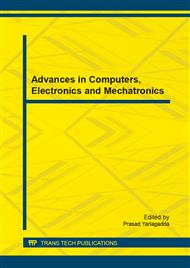p.3
p.7
p.11
p.16
p.22
p.26
p.32
p.36
Design and Implementation Virtual Reality Systems for Vocational Education
Abstract:
One of the main problems with virtual reality as a learning tool for vocational education is that there are hardly any theories or models upon which to found and justify the application development. This paper presents a model of virtual reality systems for vocational education. The essential components of the model: real environments, vocational, virtual reality system, interfaces, students, instruction team, and technology team. Metaphor is the core of our model, and one of the main advantages of metaphors is their potential universality.
Info:
Periodical:
Pages:
3-6
Citation:
Online since:
October 2014
Authors:
Keywords:
Price:
Сopyright:
© 2014 Trans Tech Publications Ltd. All Rights Reserved
Share:
Citation:


